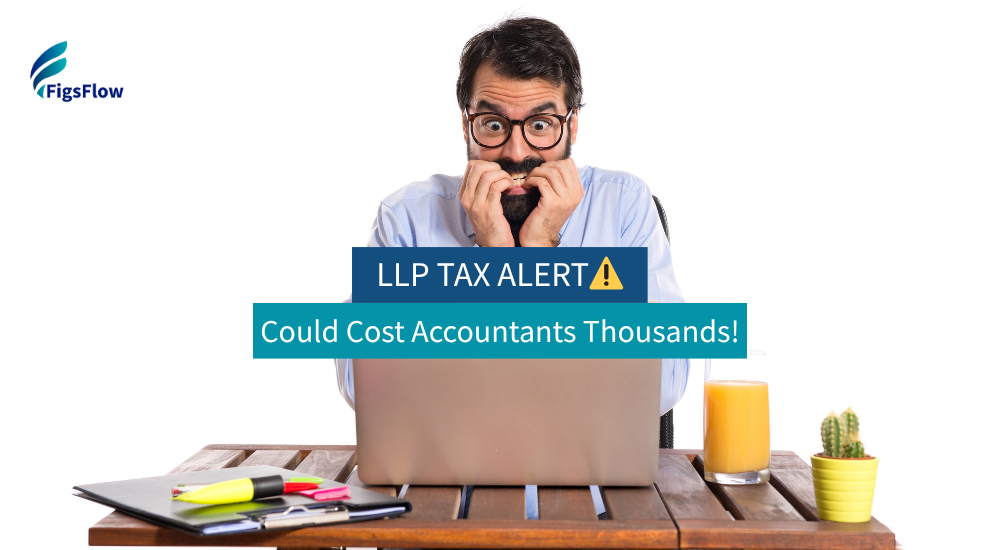You’re trying to plan for next year,amid talk of a potential tax shake-up for accountants. Budget partner compensation. Consider practice investments. Make decisions that require some certainty about costs and cash flow.
Then the Treasury starts briefing about LLP tax reforms. Different figures get quoted. Various implementation approaches get discussed. Nothing is confirmed, but everything suggests significant changes are coming.
Rachel Reeves is preparing to extend employer National Insurance Contributions to accountants operating through LLPs, with estimates suggesting this could add approximately £23,000 to the annual tax bill for an average-earning partner. The reforms form part of broader measures to address an estimated £20-50 billion fiscal shortfall.
The November 26 Budget will provide clarity on the proposed tax shake-up for accountants, but that’s weeks away. In the meantime, affected practices face difficult decisions: plan based on current rules and risk being wrong, or factor in potential changes and potentially over-prepare. Neither option is satisfactory when the changes could fundamentally alter practice economics.
News Summary
Chancellor Rachel Reeves plans to extend employer National Insurance Contributions to accountants operating through LLPs, potentially raising £2 billion annually. The measure targets approximately 190,000 professionals currently treated as self-employed and exempt from employer NICs. Accountants earning around £246,000 could face additional tax bills of approximately £23,000 annually.
The reforms aim to level the playing field between employees and self-employed professionals, though critics warn of potential workforce impacts. The changes form part of broader fiscal measures needed to address an estimated £20-50 billion shortfall in public finances while adhering to the government’s fiscal rules.
Understanding the Current LLP Tax Treatment
Limited Liability Partnerships represent a hybrid business structure combining partnership flexibility with limited liability protection. Under current tax legislation, LLP members are classified as self-employed for tax purposes, meaning they avoid employer National Insurance Contributions (NICs) entirely. This classification stems from the transparency principle in partnership taxation, where the partnership itself is not a separate taxable entity.
Currently, employer NICs stand at 15% on earnings above the secondary threshold. This represents a substantial cost differential between traditional employment structures and LLPs. The self-employed pay Class 2 and Class 4 NICs instead, which are considerably lower than the combined employee and employer NICs paid through PAYE (Pay As You Earn) arrangements.
This structural difference creates what tax economists term a “fiscal asymmetry” in the tax system. The Institute for Fiscal Studies has long highlighted this disparity as creating distortions in how businesses structure their operations and compensate their workers.
Tax Shake-Up for Accountants: Proposed Changes & Revenue Implications
The anticipated reforms would introduce a charge on LLP members approximating employer NICs, though reports suggest it may be set slightly below the current 15% rate.
However, the actual revenue raised depends on several variables. Tax behaviour elasticity plays a crucial role here. When faced with increased tax costs, taxpayers often engage in what economists call “tax planning arbitrage,” restructuring their affairs to minimise liabilities. Senior economists at the Institute for Fiscal Studies have noted significant uncertainty around revenue projections due to expected behavioural responses.
The effective tax rate increase for affected accountants could reach approximately 7.3% of their income. For accountants earning the average £246,000 annually, this translates to an additional £23,000 tax liability. This represents a meaningful erosion of take-home income that will require careful financial planning and potentially impact business investment decisions.
Policy Rationale & Horizontal Equity Considerations
The government’s position centres on horizontal equity, a fundamental tax policy principle requiring that individuals with similar economic capacity should bear similar tax burdens. The Resolution Foundation has advocated for these changes, arguing that the current system creates unjustifiable disparities between employees and self-employed professionals performing economically comparable work.
The Chancellor has emphasised that those with the broadest shoulders should contribute their fair share. This progressive taxation principle suggests that higher earners should bear proportionally greater tax burdens. Given that LLP members in accounting firms typically earn substantially above median incomes, the government argues they represent an appropriate target for revenue-raising measures.
The reforms also address concerns about disguised employment, where contractual arrangements are structured primarily for tax advantages rather than genuine commercial purposes. While LLPs serve legitimate business purposes, the tax differential has undoubtedly influenced structural decisions in professional services firms.
Potential Economic & Behavioural Impacts
The proposed changes raise important questions about labour supply elasticity and international competitiveness. Economic theory suggests that higher marginal tax rates create disincentive effects on labour supply. For high-earning professionals with significant human capital, these effects may manifest through reduced working hours, earlier retirement, or geographic relocation.
The accounting profession operates in an increasingly globalised market. Senior practitioners possess internationally transferable skills and qualifications. Tax-motivated emigration, while difficult to predict, represents a genuine risk when tax differentials between jurisdictions become substantial. Jurisdictions with more favourable tax treatment of professional services could become more attractive.
There are also concerns about the impact on practice viability and structure. Many accounting practices operate as LLPs with relatively modest profit margins after accounting for substantial professional indemnity insurance, continuing professional development costs, and regulatory compliance expenses. The additional tax burden may force smaller practices to reconsider their business models or potentially consolidate with larger firms.
Implementation Challenges & Structural Considerations
Implementing employer NICs on LLPs presents significant technical challenges. Partnership taxation operates fundamentally differently from corporate taxation. Determining the appropriate charge base requires careful consideration. Should the charge apply to all profit shares, or only to amounts representing remuneration for services rather than returns on capital?
The distinction between salaried members and equity members adds complexity. Many LLPs already distinguish between these categories, with different rights and responsibilities. Salaried members often already pay tax through PAYE arrangements. The reforms must avoid double taxation while ensuring the policy achieves its intended objectives.
There are also administrative burden considerations. HMRC (Her Majesty’s Revenue and Customs) will need systems to assess and collect the new charges. Accounting practices will face additional compliance costs in calculating liabilities and potentially restructuring their arrangements. These transaction costs represent real economic losses that should factor into policy evaluation.
Broader Fiscal Context
These proposals emerge against challenging fiscal circumstances. The government faces an estimated shortfall of £20-50 billion in meeting its fiscal rules, which require government debt to fall as a share of national income by 2029-30 and day-to-day spending to be funded through taxation rather than borrowing.
With manifesto commitments ruling out increases to income tax, VAT, and corporation tax, the government’s options for revenue raising are constrained. This has focused attention on areas where tax treatment appears anomalous or preferential, including partnership taxation.
The reforms represent part of a broader strategy to improve what tax economists call “tax base efficiency” by reducing distortions and aligning tax treatment across economically similar activities. Whether this approach proves politically and economically sustainable remains to be determined.
Conclusion
Accountants operating through LLPs should prepare for potential changes by modelling the financial impact on their practices and considering their options. These may include restructuring as limited companies, adjusting profit allocation arrangements, or reviewing pricing strategies to offset increased tax costs.
The Treasury has declined to comment on speculation regarding specific tax measures ahead of the Budget. However, the convergence of reports and expert commentary suggests these reforms have substantial probability of implementation.
The November 26 Budget will reveal the precise details, including the exact rate, implementation timeline, and any transitional arrangements. The likelihood of a tax shake-up for accountants means practices should start reviewing partnership structures and compensation models.
Until then, affected accountants should engage with their professional bodies and tax advisers to understand the implications and prepare appropriate responses.


